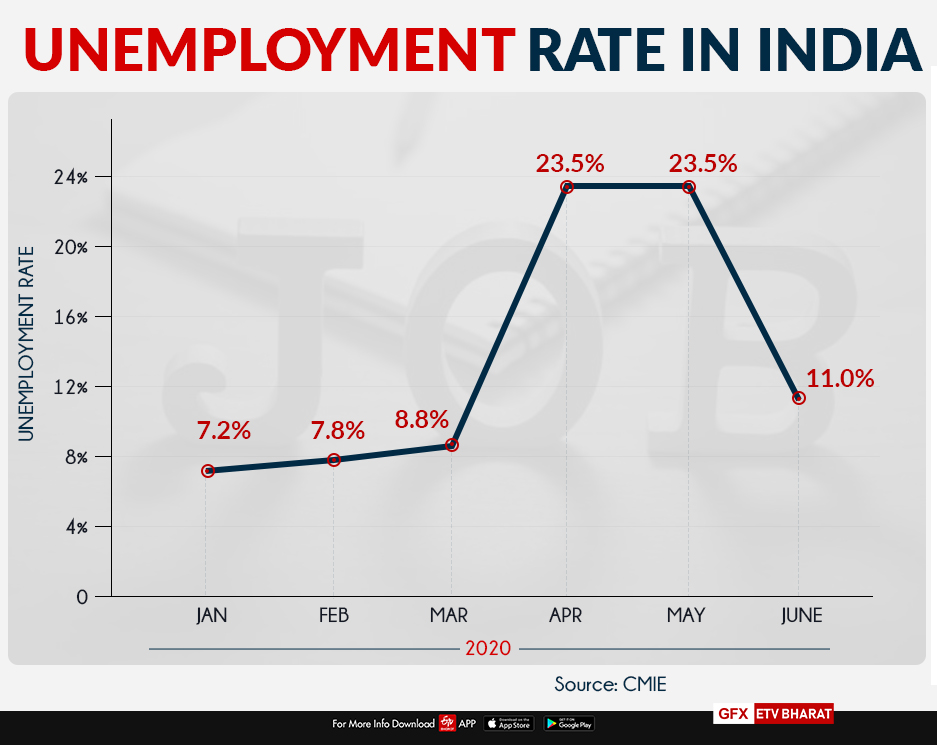Hyderabad: Last week, independent economic think tank Centre for Monitoring Indian Economy’s (CMIE’s) monthly data showed that India’s unemployment rate has fallen sharply to 11% in June from 23.5% in both May and April, reflecting the resumption in activities as the government unlocked the economy from 1 June.
Rural unemployment rate stood at 10.5% in June, a stark improvement from 22.5% in May, while urban unemployment was 12% compared with 25.8% a month ago.

The recovery in June employment numbers managed to cheer some investors and analysts as it hinted at the economy getting back on track, but a closer look at the data highlighted certain red flags.
Quality of jobs a concern
CMIE data showed that 12.2 crore jobs in India were lost in April after Prime Minister Narendra Modi imposed a nationwide lockdown towards the end of March in the wake of the Covid-19 pandemic. Later, as restrictions were gradually eased, 2.1 crore jobs came back in May and 7 crore jobs returned in June.
However, of the 7 crore jobs recovered, only 39 lakh or 5.5% were salaried jobs, with the rest of the recovery coming mostly from informal forms of employment and farming jobs, according to CMIE. This is significant as almost 1.8 crore salaried jobs were lost in both April and May.
Read more:H1-B visa suspension to have Rs 1,200-cr impact on Indian IT firms: Crisil
CMIE also explained that the recovery in jobs market in the country has been mainly led by the sudden increase in Mahatma Gandhi National Rural Employment Guarantee Scheme (MGNREGA) activities, besides easing of lockdown restrictions.
Amit Basole, who heads the Centre for Sustainable Employment, a research centre at Azim Premji University, said: “It was expected that unemployment would peak in April-May and decline in June. (But) regarding quality of jobs, it is not clear. At least some of the employment is same as pre-lockdown (e.g. small shops, workshops etc). But factory workers whose factories are still shut, or migrant workers who are coming back from their villages may be taking up work that is different from their usual work, and it may also be paying less.”
Unemployment figures still high
Notably, even if the unemployment rate has fallen in June, it is still higher than the already-worrying job-loss rates of 8.75% in March and 7.76% in February.
“It (the falling on unemployment rate in June) is good news only in the sense that the most severe effects of the lockdown have been reversed. This was expected. The longer-term problems in the labour market will still be there. We need a different set of policies to address those concerns,” said Basole.
To recall, as per the last set of official data released by the statistics ministry on employment, India’s unemployment rate had risen to 6.1% in 2017-18, confirming a controversial media report that had first said in January 2019 that joblessness has hit the highest level in the country in at least 45 years.
(ETV Bharat Report)



